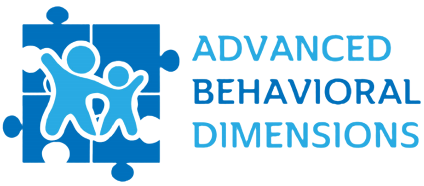Introduction
Have you ever wondered how parents can become the most powerful allies in supporting a child with autism? Imagine being equipped with the tools and knowledge to truly make a difference in your child’s life. Parents are not just caretakers; they are potential game-changers in autism intervention, capable of creating transformative learning experiences that can shape their child’s future.
Table of Contents
| Understanding Autism Intervention |
| The Unique Position of Parents |
| Key Components of Parental Training |
| Building Communication Skills |
| Creating a Consistent Learning Environment |
| Behavioral Intervention Techniques |
| Emotional Support and Psychological Impact |
| Collaborative Approach with Professionals |
| Challenges and Overcoming Barriers |
| Long-Term Benefits of Parental Involvement |
| Resources and Support Systems |
| Measuring Progress and Success |
Understanding Autism Intervention
Autism intervention is like a complex puzzle, with parents holding some of the most critical pieces. Unlike a traditional medical approach, intervention for children with autism requires a holistic, personalized strategy that extends far beyond clinical settings. It’s a journey of understanding, patience, and continuous learning.
The Unique Position of Parents
Parents have something no therapist can replicate: unconditional love and 24/7 access to their child’s daily experiences. They are the constant in a world that can often feel overwhelming for a child with autism. Their intimate knowledge of their child’s unique strengths, challenges, and nuances makes them irreplaceable partners in intervention.
Key Components of Parental Training
Specialized Training Areas:
- Understanding autism spectrum characteristics
- Effective communication strategies
- Behavioral management techniques
- Emotional regulation support
- Educational adaptation methods
Building Communication Skills
Communication is the bridge between isolation and connection. Parental training focuses on teaching parents to:
- Decode non-verbal cues
- Use alternative communication methods
- Create safe communication environments
- Encourage expressive language development
Creating a Consistent Learning Environment
Consistency is the secret sauce of autism intervention. Parents learn to:
- Establish predictable routines
- Design structured learning spaces
- Implement consistent behavioral strategies
- Minimize sensory triggers
Behavioral Intervention Techniques
Parents become skilled at:
- Positive reinforcement methods
- Redirecting challenging behaviors
- Teaching self-regulation skills
- Implementing reward systems
Emotional Support and Psychological Impact
Parental training isn’t just about techniques—it’s about emotional resilience. Parents learn to:
- Manage their own stress
- Build emotional connections
- Celebrate small victories
- Develop patience and understanding
Collaborative Approach with Professionals
The most successful interventions occur when parents and professionals work as a unified team. Training helps parents:
- Communicate effectively with therapists
- Understand professional recommendations
- Implement strategies consistently
- Track and report progress
Challenges and Overcoming Barriers
Every journey has obstacles. Parents learn to:
- Recognize personal limitations
- Seek support networks
- Develop problem-solving skills
- Maintain realistic expectations
Long-Term Benefits of Parental Involvement
Research consistently shows that children with autism who receive consistent, trained parental support demonstrate:
- Improved social skills
- Enhanced communication abilities
- Better emotional regulation
- Increased independence
Resources and Support Systems
Parents are connected to:
- Support groups
- Online learning platforms
- Professional counseling
- Specialized workshops
- Community resources
Measuring Progress and Success
Success in autism intervention is not linear but multidimensional. Parents learn to:
- Set realistic goals
- Use tracking tools
- Celebrate incremental improvements
- Adapt strategies as needed
Conclusion
The role of parents in autism intervention is nothing short of transformative. Through dedicated training, parents become empowered advocates, skilled supporters, and critical partners in their child’s developmental journey.
Frequently Asked Questions
- How early should parents start intervention training? As soon as possible after diagnosis, ideally between ages 2-5 when neuroplasticity is highest.
- Can parents without medical backgrounds effectively help? Absolutely! With proper training and support, parents become incredibly effective intervention partners.
- How much time does parental training typically require? Training is ongoing, but initial intensive programs might range from 10-20 hours, with continued learning over time.
- Are there financial assistance options for training? Many regions offer government support, insurance coverage, and non-profit resources for autism intervention training.
- What if progress seems slow or inconsistent? Patience is key. Every child is unique, and progress varies. Consistent support and professional guidance are crucial.




